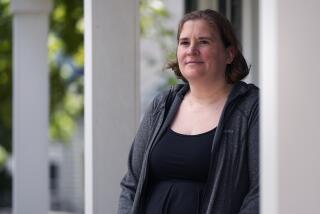School Absences, Not Payment, Are a Problem
- Share via
Re “Should Parents Pay for School Days Kids Miss?,” letter, Sept. 7:
Bruce Crawford misses the point of asking for reimbursement. Overall, absences result in more services performed by schools, not fewer. As a teacher and parent, I suggest that asking for $40 is not as much the issue as finding it necessary to do so. If absences were only from illness, there would be no need for the policy. My experience at the high school level is that non-illness absences far outweigh those due to illness or absolute necessity.
The restaurant analogy is flawed. When you do not appear at the restaurant, do restaurant employees (paid solely for that purpose) take the time to keep a record of your absence and eventual return? Does the restaurant answer your e-mail or phone call, responding to your request for an explanation of what you missed on the menu that night? When you return, does someone cook the meal you missed in addition to the one you are currently ordering -- for no extra charge? Now imagine that two to five absent patrons, all returning at the same time, require such attention by one waiter or chef. Then, imagine it happening every hour for five straight hours throughout the evening. It occurs daily in schools.
While I haven’t taken a position on the $40 reimbursement request by Los Alamitos, I do take a position in favor of reducing absences. I also take the position that reasonable and intuitive parents understand that absences require additional services be performed by schools and teachers, not less.
Elizabeth Triana
Mission Viejo
*
There have been letters written recently on whether parents should be required to pay when their child is absent from school unnecessarily. I am not writing to take sides on the issue, but rather to question why a school district loses $40 per student in the first place. When a class of 30 students is reduced to 29 on any particular day, the school district’s overhead is not reduced by $40. The district still has to provide lighting, heating, air-conditioning, teachers and administrative staff for the other 29 students. I cannot think of any cost savings for a school when there are 29 instead of 30 students.
If someone can explain the logic behind this system, I’d like to hear it. Until then, I feel the education of future generations of Californians is too important to have school districts subjected to such an arcane budgeting process.
Jeff Andrews
Trabuco Canyon
*
I have been a substitute teacher for 10 years. I do not baby-sit. When I take over for a teacher I maintain discipline, I teach the lessons prepared by the teacher, I correct as many collected assignments as time allows, I do whatever yard duty is required, and I leave the classroom as clean as possible. All this I do for less than half what a regular full-time teacher makes. If a student is found at the end of the year to have learned only half of what he was expected to learn, you can bet your bottom dollar that that child probably: 1) didn’t pay attention in class as much as he should have; 2) didn’t do the assigned class work and homework with appropriate focus and effort; and/or 3) did not try to find out what was taught and what assignments were given when he was absent and then make up what was missed. Teachers teach, but students must be receptive to the teaching in order to learn.
If Bruce Crawford thinks so little of the hard work done by most teachers, perhaps he can offer to get his credential and show us how it’s done. Or maybe he would rather home-school his children.
If the politicians who are responsible for the dismal mess that educational financing is in were required to spend a month fully responsible for a classroom full of rambunctious students, I believe teachers would be much better paid and better respected. They deserve both.
Maggie Bell
Dana Point






